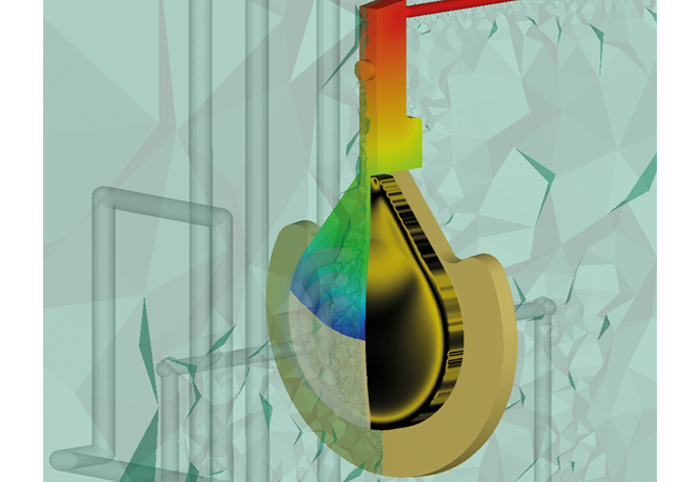
More is Less
Simulation as a Tool for Weighing Process Options before Producing Optical Components
Making the production of optical lenses economical while maintaining a certain level of product quality poses a huge challenge. Aside from the need to modify the geometry of the molded part, there is often a debate about the right production strategy. Injection-compression molding may offer an alternative to injection molding in terms of quality, but it is also cost-intensive. This is where simulation can serve as a decision-making aid.
Lenses have played an important role in people’s lives since long before the 17th century, when the Laterna magica or magic lantern was developed. The first optical products made by humans are considerably older. In early times, they were made by grinding or polishing mostly quartz to produce the desired properties.
Today, it is hard to imagine everyday life without lenses. Glasses, cameras and projectors are obvious examples, but metrology and automotive engineering are other areas in which they play a major role. A corollary of this wide range of applications is that the mechanical manufacture of lenses is constantly being presented with new challenges, and so not only the manufacturing process but also the underlying material, quartz, is in need of alternatives.
Back in 1933, Röhm & Haas AG launched a polymethyl methacrylate (PMMA) under the brand name Plexiglas. A good seven years later, in 1940, Heinrich Wöhlk developed a product whose forerunner had first been proposed by René Descartes back in 1636 – the contact lens. A whole series of developments followed, but the example of the contact lens illustrates for how long and to what extent lenses have fascinated mankind.
Injection Molding or Injection-Compression Molding?
A decisive, portentous step was ultimately taken when plastics started to be used in the manufacture of products that possess optical properties. Injection molding, the process by means of which the two components – plastic and lenses – are combined, is capable of producing large volumes with reproducible results. However, it also has to contend with technical hurdles such as uneven shrinkage, stresses and sink marks.
Since the requirements imposed on products with optical properties are much higher than those on technical products, a further manufacturing process that merits consideration is injection-compression molding. Combining injection molding and compression molding affords a way of optimizing both process-related (e.g. filling pressure) and component-related properties. The main focus here is on homogenizing both material and component properties.
Injection-compression molding delivers superior component quality compared to injection molding but can incur considerable costs. This is where process simulation steps in. Not only can each process be modeled in the same way as for technical components, but optical properties such as birefringence, refractive index, fringed pattern, and retardation can also be simulated. Thus, simulation is a tool that optimizes the production of optical parts and also provides criteria for a well-informed decision as to which process is best suited to which product from a qualitative and an economic point of view.
Simulation Insights and Differences
Process simulation is a long-established tool for garnering knowledge about genuine errors – and not just the kind suggested in the context of troubleshooting. It is also used in product development to identify and, if possible, rule out potential problems from the outset. Furthermore, simulation can be used to evaluate alternative processes and materials ...
DOWNLOAD the complete article as PDF
Published in 'Kunststoffe' edition 05/2020
